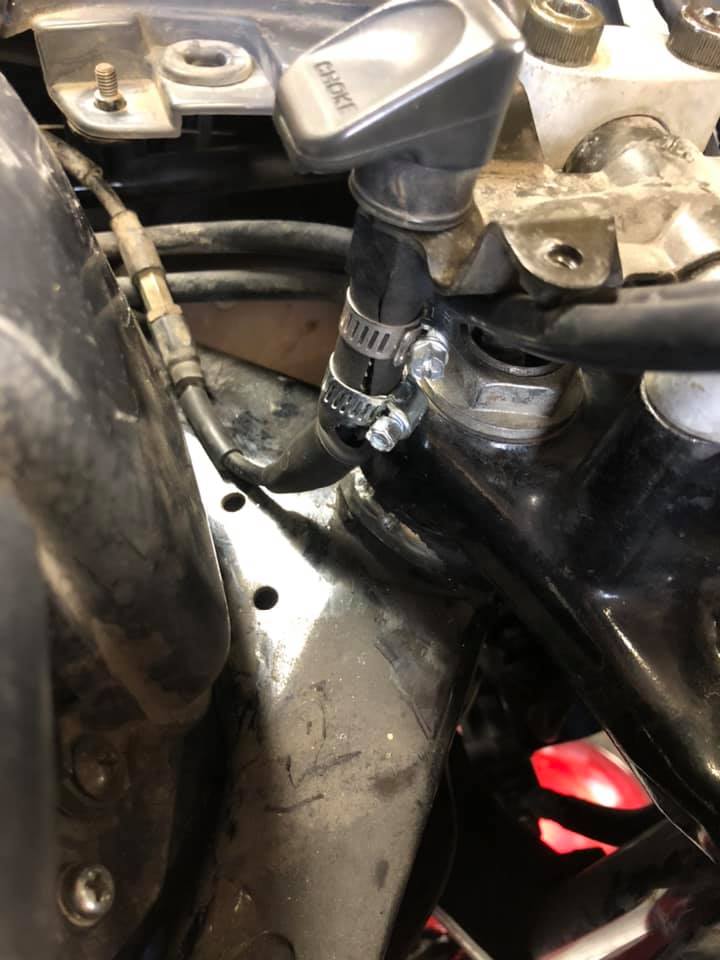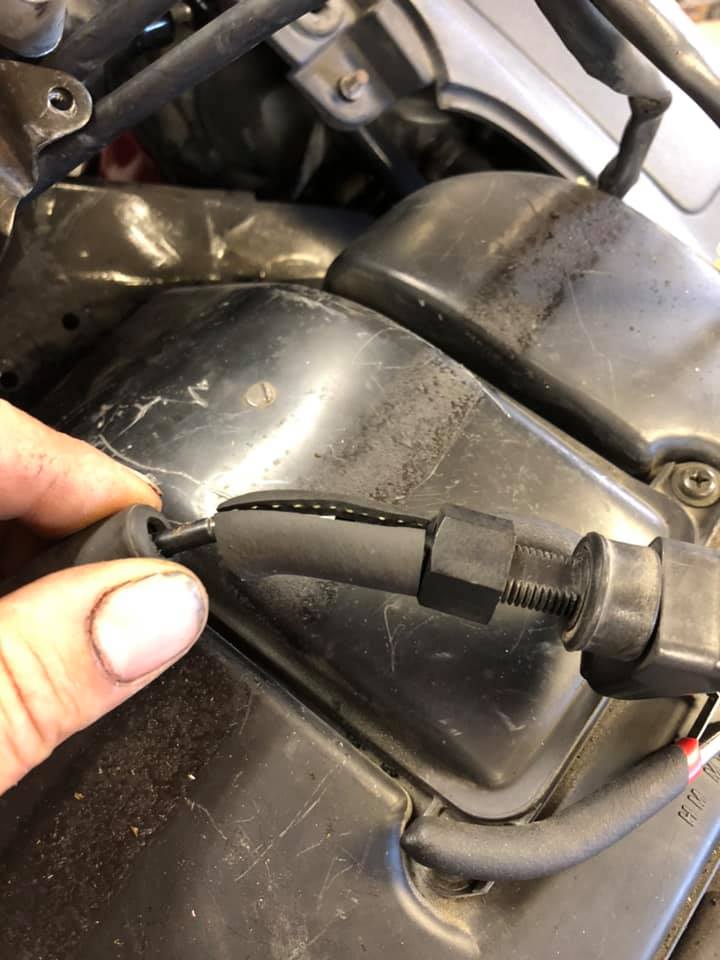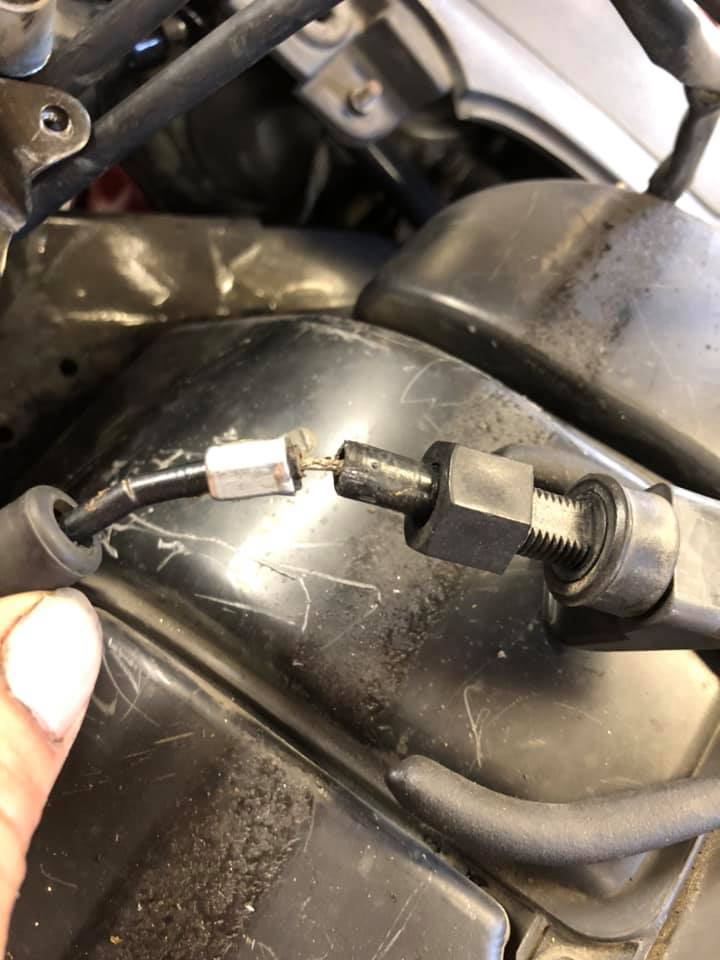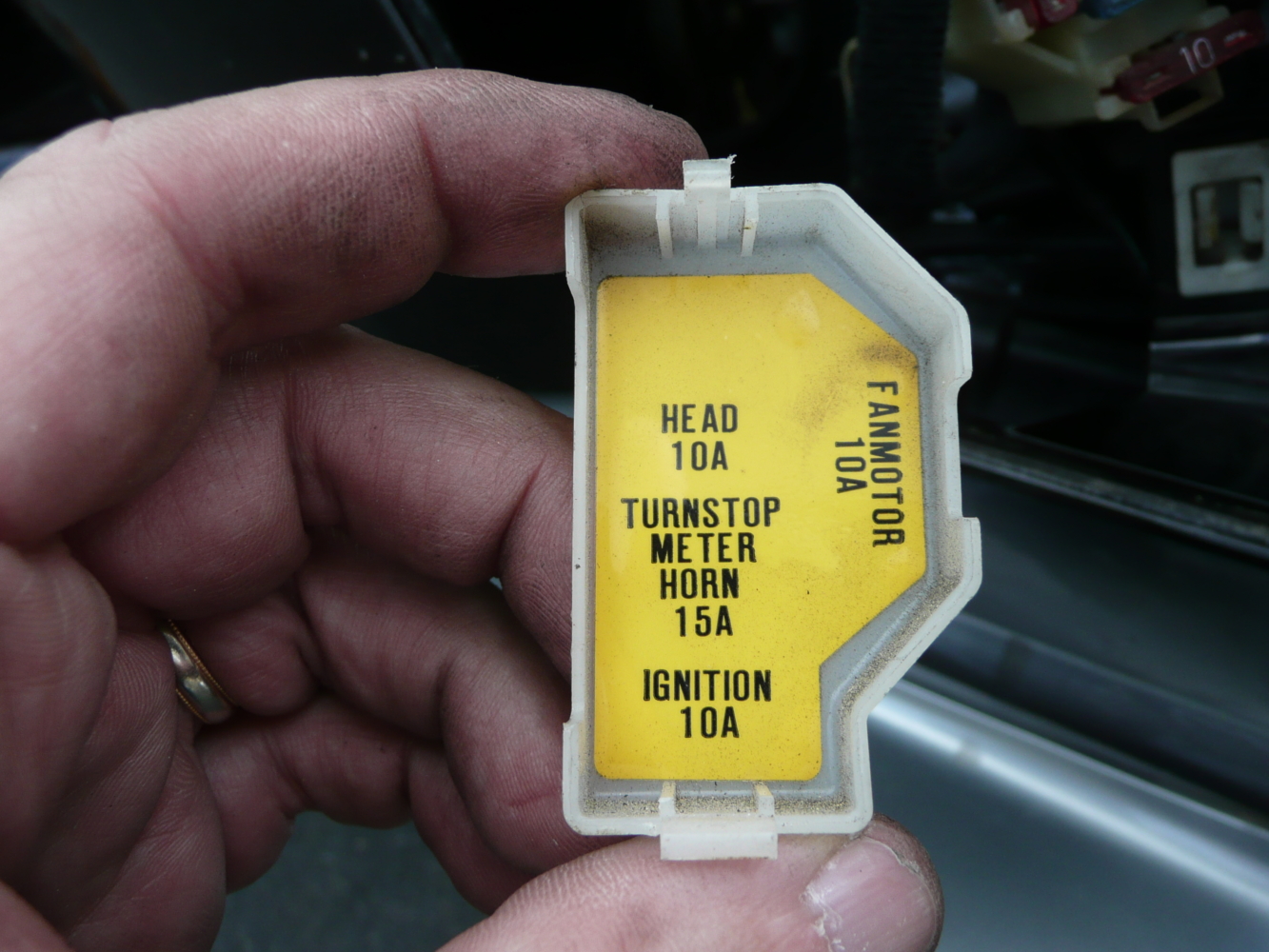For those replacing the clutch or the clutch springs on a Honda Pacific Coast PC800, this information may help with the procedure to remove and reinstall the left crankcase cover, and with the torque specs for the bolts that hold the clutch plates in place. This information comes courtesy of Seth on the iPCRC.
Tips: Do mark the cover to indicate where odd bolt lengths go and any extra dowels, brackets, clips, … :

There are a couple of flanges that make pulling the crankcase cover easier.
Front:

Rear:

The little bolts that hold the clutch plates and springs in place are Class 8 M6x1 20mm flanged hex head screws, rather stronger than the generic hardware. There ought to be an underlined “8” on the head:

(It’s underlined so that you don’t read it upside down and confuse it with an “8”. Braille on a drive-up ATM keypad?)
The Page 1-14 specification for “6mm flange bolt (10mm head) and nut” is “12 (1.2, 9)” (N·m (kg-m, ft-lb)). That matches the explicit specification for the clutch bolts on ‘oldWing, my 1984 GL1200A, which uses the same size bolts.
FWIW, when removing the bolts from Winglet’s 1997 clutch I tried to measure the torque required to break the bolts loose. The results, in in-lb, were: 114, 126, 120, 126 and 144+.
When re-installing the crankcase cover, apply sealant to the pulse generator wiring gasket before installing the crankcase cover gasket:

I’ve been using Permatex Optimum Black Gasket Maker instead of HondaBond lately with good results.




